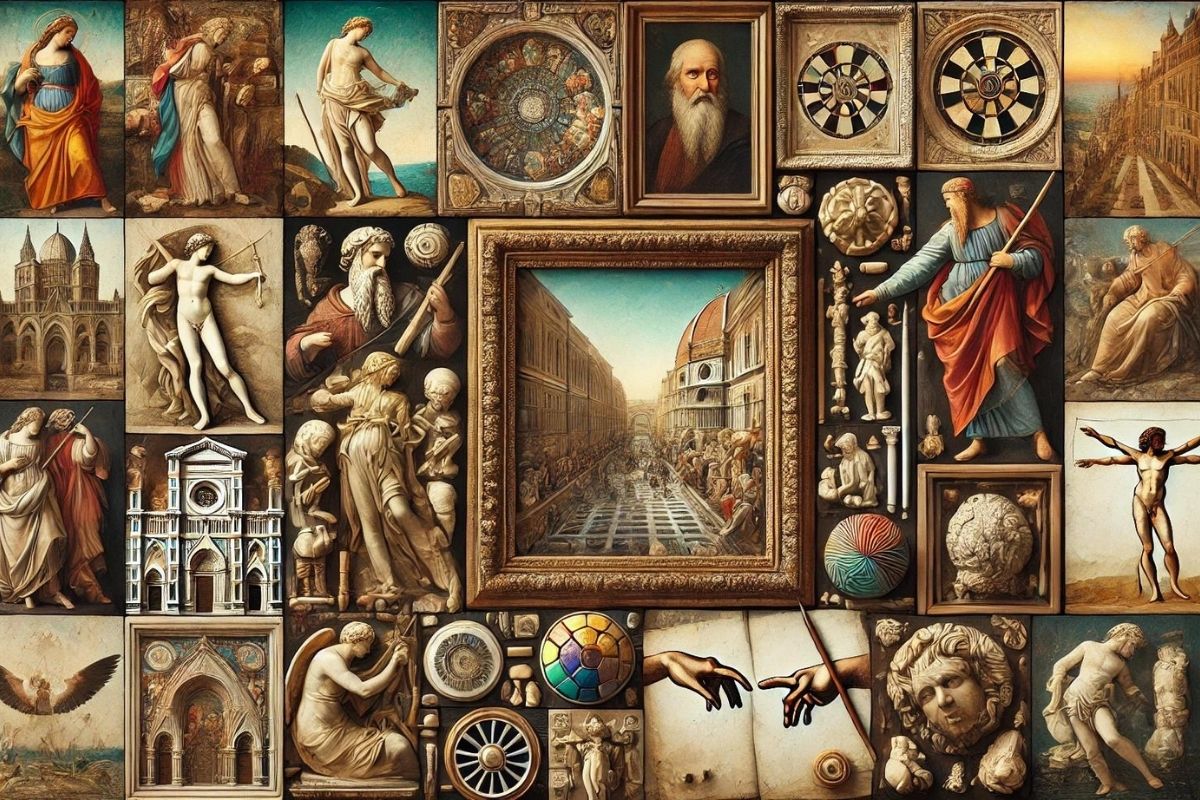The Renaissance, a dynamic time of enlivening in human expression and sciences, in a general sense reshaped the scene of imagination and its resulting effect on modern feel. The period’s accentuation on humanism, extent, and the quest for magnificence has penetrated through time and essentially molded the calculated underpinnings of modern imaginative articulation. This article dives into the significant effect of Renaissance craftsmanship on modern aesthetics, following its reverberations in contemporary workmanship, engineering, and then some.
The Agreeable Equilibrium: Extent and Symmetry
The Renaissance proclaimed a restoration of traditional vestige’s affection for congruity and equilibrium, standards strikingly communicated through its craft. Craftsmen like Leonardo da Vinci and Michelangelo were makers as well as energetic understudies of the human structure, trying to accomplish a glorified authenticity grounded in exact numerical proportions. Their works, described by faultless extent and evenness, turned into the benchmarks for excellence and agreement in the visual expressions.
This fastidious thoughtfulness regarding equilibrium and extent is obvious in modern plan, especially in engineering and visual computerization. The Renaissance’s impact should be visible in the neoclassical structural developments of the eighteenth and nineteenth hundreds of years, which vigorously acquired from the balance and extents of Renaissance feel. Besides, these standards have been refined into pretty much every visual part of contemporary plan, exhibiting an immortal allure that characterizes what is outwardly satisfying.
The use of brilliant proportions, first recorded and applied by Renaissance craftsmen, stays pervasive in modern plan programming, empowering fashioners to easily accomplish outwardly engaging and adjusted manifestations. In this way, the Renaissance has granted a persevering through heritage that keeps on forming tasteful decisions and guidelines in the visual expressions.
Humanism and the Accentuation on Individual Expression
Renaissance humanism delivered a significant worship for the keenness and nobility of the individual, a topic communicated through its specialty which celebrated human structure and feelings with remarkable authenticity. This was a create some distance from the strict and iconographic customs of the middle age time frame, welcoming a more nuanced investigation of human instinct and life structures. The resultant accentuation on distinction and individual articulation found way into various artistic expressions and developments characterize the modern world.
In contemporary craftsmanship, the impact of Renaissance humanism is unmistakable in progress of dynamic expressionists who underscore distinction and individual articulation. Painters like Jackson Pollock and Willem de Kooning, who supported the theoretical expressionism development, reflected the Renaissance’s attention on the individual, yet in boundlessly various styles and settings. Their work underscores close to home profundity and individual commitment, signs of Renaissance humanism.
In addition, the modern realistic and visual expressions regularly utilize strategies spearheaded during the Renaissance, for example, the utilization of point of view and chiaroscuro to convey further accounts about human feelings and encounters, displaying the persevering through tradition of Renaissance craftsmanship.
Innovation in Procedures: Viewpoint and Chiaroscuro
The Renaissance’s presentation of direct viewpoint upset visual portrayal by presenting a framework that makes the deception of profundity on a level surface, considering more sensible and three-layered creative articulations. This procedure changed compositions as well as how spaces and conditions are conceptualized in plan and engineering.
Modern augmented simulation conditions and computer games broadly utilize point of view standards to make vivid encounters that are immediate relatives of Renaissance advancements. Essentially, chiaroscuro, the strategy of utilizing solid differences among light and dim to accomplish a feeling of volume in demonstrating three-layered items and figures, is a staple in visual media, impacting everything from the sensational transaction of light and shadow in film noir to dynamic concealing in realistic books.
These methods highlight the Renaissance’s part in giving a tool compartment to authenticity that keeps on illuminating a wide reach regarding modern creative disciplines, empowering specialists and creators to investigate spatial profundity and emotive narrating through light and shadow.
The Renaissance time frame, set apart by a resurrection of learning and imaginative turn of events, lastingly affects modern style. From the agreeable equilibrium of extents in plan to the hug of humanism in contemporary workmanship, the reverberations of Renaissance developments are apparent in different parts of modern culture. Its heritage isn’t just in the strategies and standards it presented yet in the persevering through mission for excellence and understanding that keeps on motivating specialists and masterminds across the globe.


